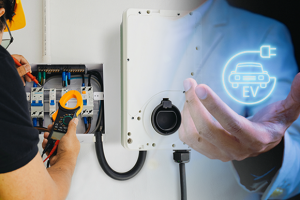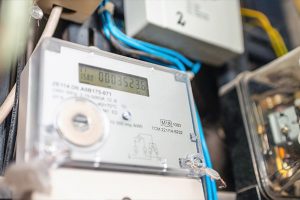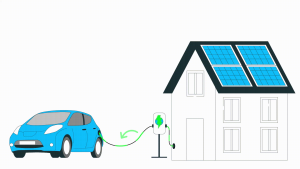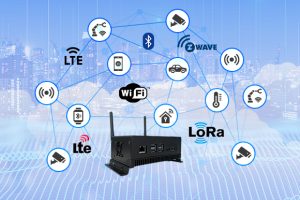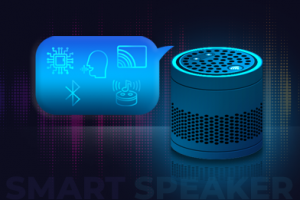In a rapidly evolving world where devices are becoming smarter and systems increasingly connected, IoT connectivity protocols serve as the silent yet powerful backbone of innovation. From home automation and wearable health monitors to smart factories and connected vehicles, it is the ability of devices to communicate reliably and securely that defines the true value of the Internet of Things (IoT).
But how do these devices talk to each other? The answer lies in a diverse ecosystem of wired and wireless communication protocols-each offering unique benefits and trade-offs depending on the application. Understanding these protocols is critical for building scalable, secure and high-performing IoT solutions.
In this blog, we explore the IoT connectivity landscape, including protocol types, selection criteria, real-world use cases, security considerations and common challenges-offering a comprehensive view of the technologies powering our connected world.
Table of Contents
Understanding the Landscape of IoT Connectivity
IoT connectivity refers to the networking technologies and communication protocols that allow devices to send, receive and process data. With the number of connected devices projected to surge from 15.9 billion in 2023 to over 32.1 billion by 2030 (source : Link), seamless communication between edge devices, gateways, and the cloud is essential to unlocking automation, intelligence and operational efficiency across sectors.
Wired IoT Connectivity Protocols: Speed, Stability and Precision
Although wireless protocols often dominate the conversation, wired connectivity remains a critical component especially in industrial, infrastructure and mission-critical environments. These protocols offer low latency, high reliability and resistance to electromagnetic interference.
Key wired IoT protocols include:
- EtherCAT – Real-time Ethernet technology for industrial automation.
- EtherNet/IP – Industrial Ethernet supporting deterministic control.
- OPC UA – Platform-independent protocol for secure and reliable data exchange.
- Profinet / Profibus – Widely used in manufacturing for real-time control and diagnostics.
- Modbus – A robust and simple serial communication protocol.
- BACnet – Commonly used in building automation systems (HVAC, lighting).
- TCP/IP, RTSP, D-Bus – Protocols for structured data transmission, media streaming and inter-process communication.
These protocols are ideal for time-sensitive and high-reliability applications in industrial automation, smart buildings and utilities.
Wireless IoT Connectivity Protocols: Flexibility and Scalability
As IoT expands into consumer, urban, and remote domains, wireless connectivity provides the mobility and reach needed to enable smart ecosystems. With varying requirements for range, power consumption and bandwidth, each wireless protocol addresses specific needs.
Prominent wireless IoT protocols include:
- Wi-Fi & MQTT – High-throughput, low-overhead communication.
- BLE (Bluetooth Low Energy) – Ideal for wearables and low-power mobile devices.
- ZigBee & WirelessHART – Mesh networking for home and industrial automation.
- LoRaWAN – Long-range, low-power protocol for wide-area sensor networks.
- NFC (Near Field Communication) – Short-range communication for secure access and identity.
- UWB (Ultra-Wideband) – Precision positioning and short-range data transfer.
- LTE/5G/NB-IoT – Cellular protocols for high-speed and low-power wide-area communication.
- CoAP – Lightweight protocol for constrained devices and networks.
How to Choose the Right IoT Connectivity Protocol
Selecting the optimal protocol involves evaluating multiple parameters:
| Parameter | Consideration |
| Power Consumption | Battery-powered devices require energy-efficient protocols (BLE, ZigBee). |
| Range | Use LoRaWAN or NB-IoT for long range; BLE or NFC for short-range apps. |
| Bandwidth | Applications like video streaming demand high-throughput options (Wi-Fi, 5G). |
| Latency | Real-time systems benefit from low-latency solutions (EtherCAT, 5G). |
| Mobility | Mobile use cases are best served by cellular or Wi-Fi technologies. |
| Network Topology | Choose mesh (ZigBee), star (LoRaWAN), or point-to-point (NFC) as needed. |
| Security | Encryption (TLS/DTLS), authentication, and secure boot are essential. |
Use Case Mapping: Protocols by Application
| Application | Suitable Protocols |
| Smart Homes | ZigBee, Wi-Fi, BLE |
| Wearables | BLE, UWB |
| Smart Cities | LoRaWAN, NB-IoT |
| Industrial Automation | EtherCAT, Profinet, OPC UA |
| Agriculture | LoRaWAN, NB-IoT |
| Asset Tracking | BLE, UWB |
| Healthcare | BLE, Wi-Fi, CoAP |
| Smart Buildings | BACnet, ZigBee, Wi-Fi |
Securing IoT Communication
Connectivity introduces risk, and security must be integrated at the protocol level. Key security measures include:
- End-to-end encryption (TLS, AES, DTLS)
- Device authentication (certificates, tokens)
- Secure boot and encrypted OTA updates
- Intrusion detection systems and firewalls
- Data integrity and tamper protection
Neglecting protocol-level security leaves devices vulnerable to hijacking, spoofing, or data breaches.
Common Challenges in IoT Connectivity
Despite its transformative potential, IoT connectivity poses several challenges:
- Protocol Fragmentation – Too many options can hinder integration
- Interoperability Issues – Lack of standardization between vendors
- Legacy Constraints – Older systems like Modbus may need upgrades
- Power Limitations – Wireless protocols must balance performance with battery life
- Network Congestion – High-density environments may face data delays or packet loss
Partner with VVDN for Scalable, Secure IoT Connectivity
IoT connectivity is more than just a network requirement – it’s the foundation for smart cities, digital health, intelligent logistics and Industry 4.0. Selecting the right communication protocol or combination of protocols can make or break your product’s success.
At VVDN Technologies, we bring deep expertise in protocol engineering, building secure, scalable, and high-performance communication frameworks across both wired and wireless domains. From BLE integration in wearables to deploying LoRaWAN in smart metering, or creating industrial-grade gateways with Modbus and EtherCAT we help enterprises turn connectivity into a strategic advantage.
Looking to future-proof your IoT solutions? Connect with VVDN your trusted engineering partner for end-to-end IoT connectivity solutions.






















